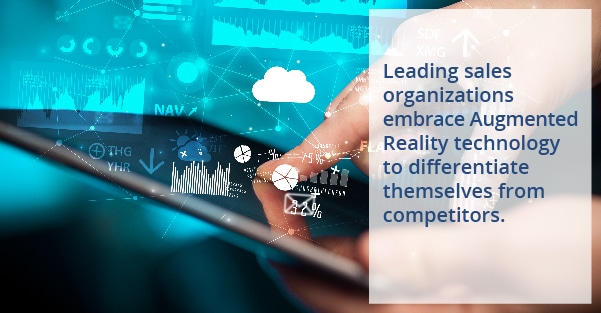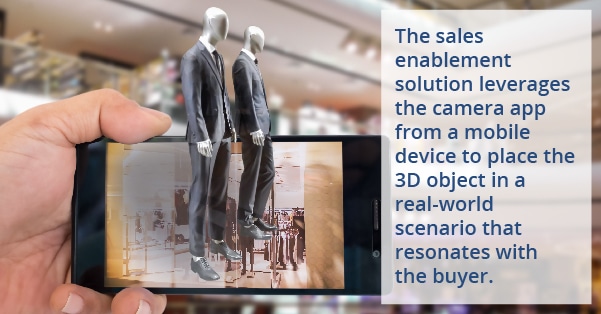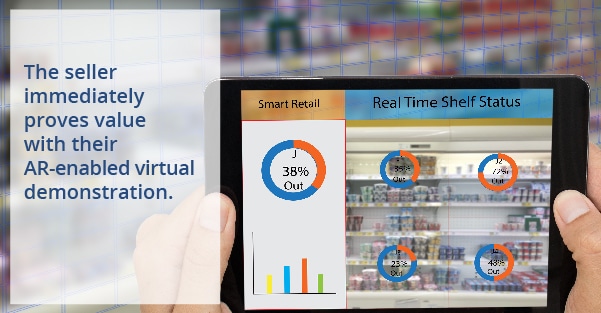The term “Augmented Reality” (AR) technology may sound straight out of a science fiction novel, but it is becoming increasingly important for B2B sales organizations looking to evolve their sales methodologies.
Now more than ever, B2B buyers are highly sophisticated, have a multitude of information about competitive offerings at their fingertips, and are dissatisfied with static sales presentations. In turn, B2B salespeople, especially those in industries like Consumer Packaged Goods, Manufacturing or life sciences, find that traditional sales collateral falls short of demonstrating business value and building relationships with prospective customers.

What are examples of Augmented Reality?
The term “Augmented Reality” encompasses technology that superimposes graphics and/or audio onto the real world around us. AR technology is meant to enhance a user’s reality, rather than completely replace it (like Virtual Reality technology does).
While you may have seen Augmented Reality featured in futuristic Hollywood movies, the technology is already being used in day-to-day applications. For example, Google introduced its Google Glass technology (now known as Google Lens) in 2013; when wearing a pair of these eyeglasses, the user has access to a myriad of information and images while going about their day-to-day activities.
Augmented Reality is also frequently used by the ordinary smartphone consumer. AR-enabled mobile gaming apps (think Pokemon Go!) leverage the smartphone camera to augment the user’s experience (such as a Pikachu appearing on a busy street corner). AR technology for consumer use continues to evolve at a rapid pace.
What is Augmented Reality used for?
Companies using Augmented Reality invest in creating 3D content to deploy through sales enablement platforms, such as mockups of CPG promotional displays or heavy machinery. Augmented reality is transforming the manufacturing and retail industries and for good reason.

What are Augmented Reality benefits for B2B Sales?
Augmented Reality greatly enhances a buyer’s experience during the sales interaction on their journey to purchase. 3D graphics allow them to envision every detail of a product and get a true sense of its features and benefits. Instead of relying on a leave-behind datasheet that simply lists product specifications and performance capabilities, buyers achieve a stronger sense of how the product will look, feel and fit into their space, increasing confidence in their purchase.
For any salesperson, an engaged buyer is paramount to moving the sales process forward. When a sales rep tells a compelling and interactive story using Augmented Reality technology, they differentiate the B2B buying process from competitors who are unable to deliver an interactive and engaging experience for their buyers.

Mediafly’s sales enablement solution supports the ability for sellers to leverage Augmented Reality technology to engage buyers and inspire confidence in their purchasing decisions. When investing in Augmented Reality as a sales enablement strategy, high-performing organizations easily demonstrate their portfolio’s value and capabilities in real-life scenarios. Sales interactions evolve from delivering static presentations with clunky product demos to productive and interactive conversations that positively align and enhance buyer needs.
To learn more about leveraging Augmented Reality alongside sales enablement technology, Contact Mediafly.

Comments are closed.